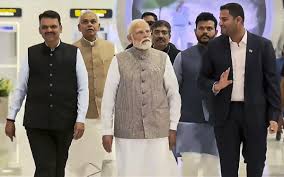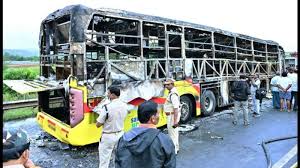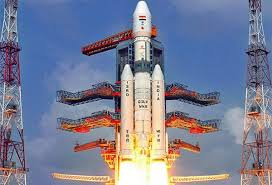PM Modi Inaugurates First Phase of Navi Mumbai International Airport
Prime Minister Narendra Modi, on October 8, 2025, inaugurated the first phase of Navi Mumbai International Airport (NMIA), an important milestone in India’s aviation infrastructure. Maharashtra Chief Minister Devendra Fadnavis, Deputy Chief Minister Eknath Shinde and Adani Group Chairman Gautam Adani and other dignitaries were present at the event.
A dream came true
NMIA, located in Ulwe, Navi Mumbai, is set to become India’s largest greenfield airport. Built at an estimated cost of ₹19,650 crore (about $2.2 billion), the airport is developed under the public-private partnership (PPP) model, with the Adani Group holding a majority stake. Spread over 1,160 hectares, the airport is designed to handle 90 million passengers annually upon completion.
The first phase of the airport consists of a single terminal building and one runway, with an initial capacity to handle 20 million passengers per year. The terminal is equipped with 66 check-in counters, 29 aerobridges and 22 self-baggage drop counters, aimed at providing a seamless and efficient travel experience.
Technological advancements
NMIA is poised to become India’s first fully digital airport, integrating advanced technology to enhance passenger convenience. In line with the government’s Digital India vision, the airport will feature automated check-in kiosks, biometric boarding systems and paperless operations.
Connectivity and infrastructure
The airport is strategically located to reduce congestion at the existing Chhatrapati Shivaji Maharaj International Airport. It is well connected through an extensive transport network including Mumbai Metro, roadways and proposed water taxi services. These multimodal connectivity options are expected to facilitate smooth and efficient travel for passengers.
Cultural significance
Reflecting the rich cultural heritage of Maharashtra, the terminal’s architecture is inspired by the lotus flower, a symbol of purity and beauty. The design includes sculpted pillars resembling lotus petals, creating a serene and aesthetically pleasing environment for passengers.
Economic impact
The NMIA is expected to significantly boost the local economy by creating employment opportunities and attracting investment. The airport’s cargo terminal, with an initial capacity of 0.5 million metric tonnes per annum, is set to be expanded to 3.2 million metric tonnes in subsequent phases, which will position NMIA as a major logistics hub.
Looking ahead
While the first phase of the airport is now operational, commercial flights are scheduled to begin in December 2025. Major airlines, including Air India, IndiGo and Akasa Air, have announced plans to commence operations at NMIA, further enhancing Mumbai’s status as a global aviation hub.
Conclusion
The opening of the first phase of Navi Mumbai International Airport represents a significant leap forward in India’s aviation sector. With its state-of-the-art facilities, technological advancements and strategic location, NMIA is set to transform travel and connectivity in Mumbai and beyond. As the airport continues to expand, it will play a key role in shaping the future of India’s aviation landscape.













